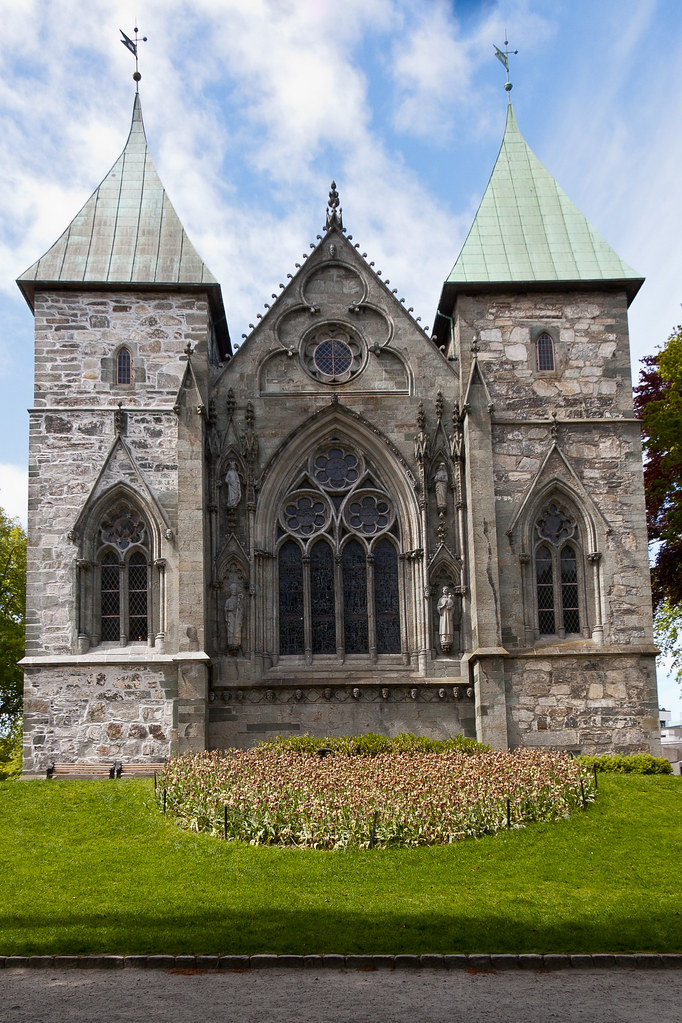
Above: Stavanger Cathedral (1125), the oldest cathedral in Norway.
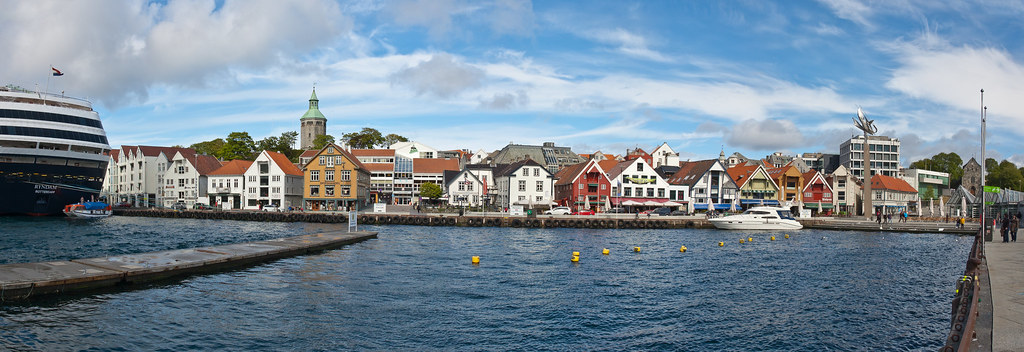
Above: Wooden houses along the harbour front.
The protection of these houses has caused the town centre and inner city to retain a small-town character, and even after the city's rapid growth in the 1970s onwards, the urbanization of the city centre has been limited and a large share of the population still lives in detached houses.
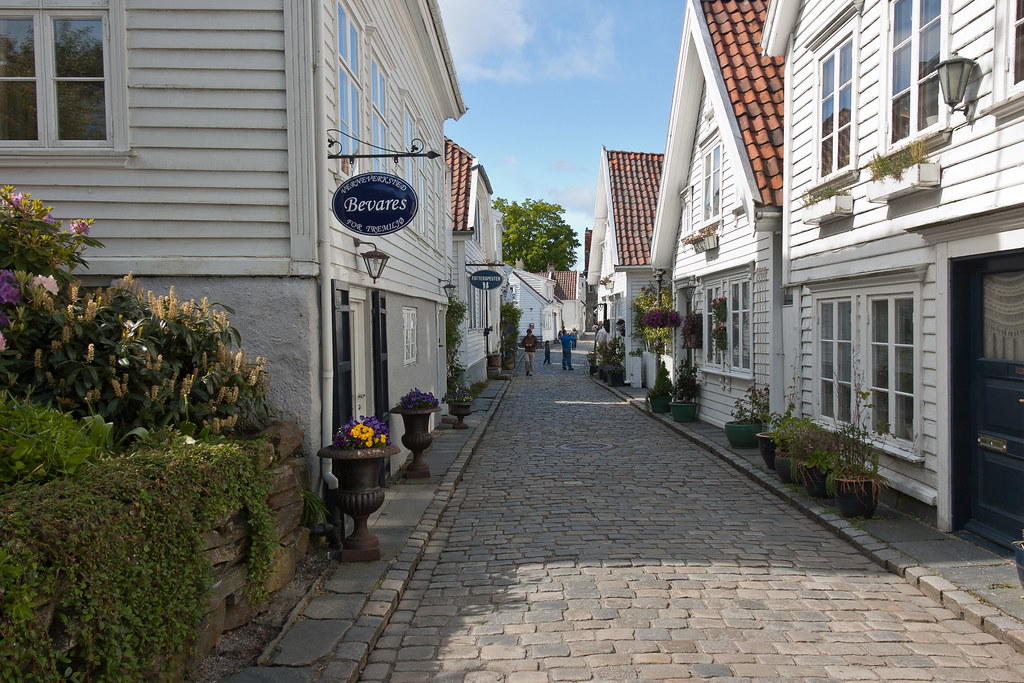
Above: The houses were originally built for seaman, craftsmen and businessmen. Conservation of Old Stavanger is today considered the city's most important project.
The city's rapid population growth in the late 1900s was primarily a result of Norway's booming offshore oil industry. Norway always had a harsh economy, given its rocky land, cold weather, and sufferings during the Napoleonic and Second World Wars. When Norwegians struck oil on Christmas Eve in 1969, prospects changed. Today the oil industry is a key industry in the Stavanger region and the city is widely referred to as the Oil Capital of Norway.
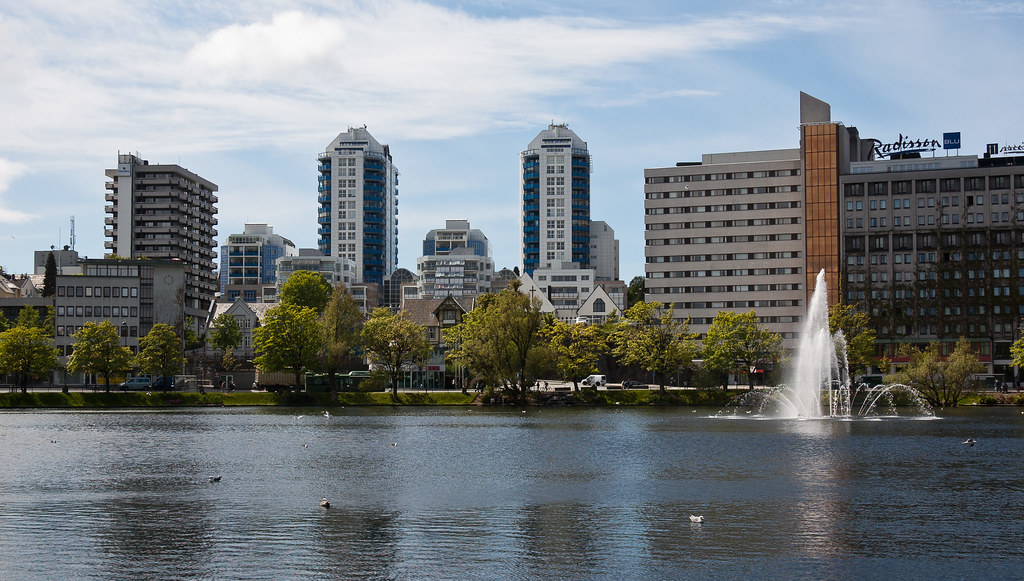
Above: The more urbanised areas of the city.
I took a shore excursion on one of my visits to Stavanger which visited several sites and museums. Our first stop was the Sword in the Rock Monument. It is comprised of three Viking swords forced into the ground, stands more than 30 feet tall, and commemorates the place where Viking King Harald Haarfagre (Fairhair) defeated the last of the regional princes in AD 872 and founded the Kingdom of Norway by uniting the 29 small kingdoms under one crown.
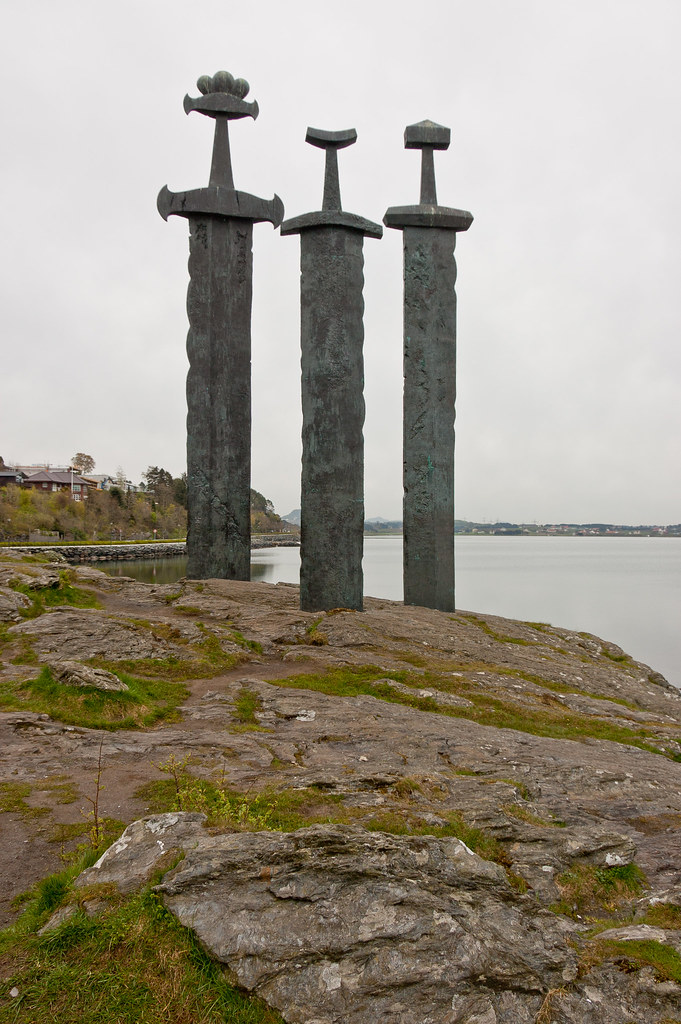
Above: The Sword in the Rock Monument.
We then travelled on, through agricultural countryside to the Iron Age farm. On this farm are several earth huts, with grass roofs; the living conditions from 1,500 years ago have been recreated. The farm itself is situated in an area with burial mounds from the Bronze Age as well as from the time of the Vikings.
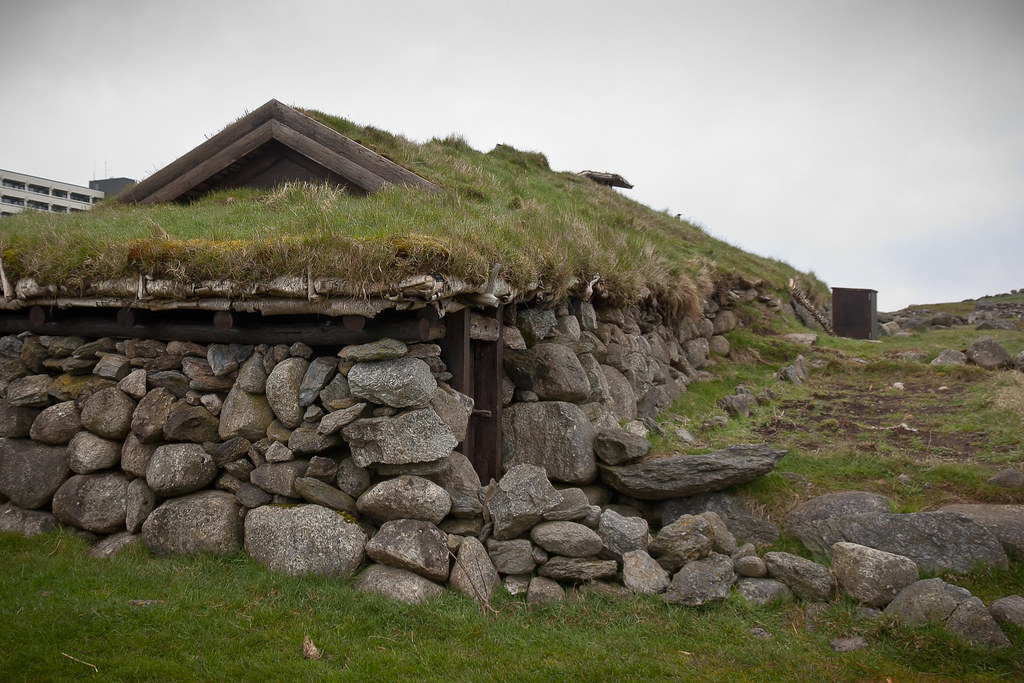
Above: Reconstructed huts which would have housed several families and their animals.
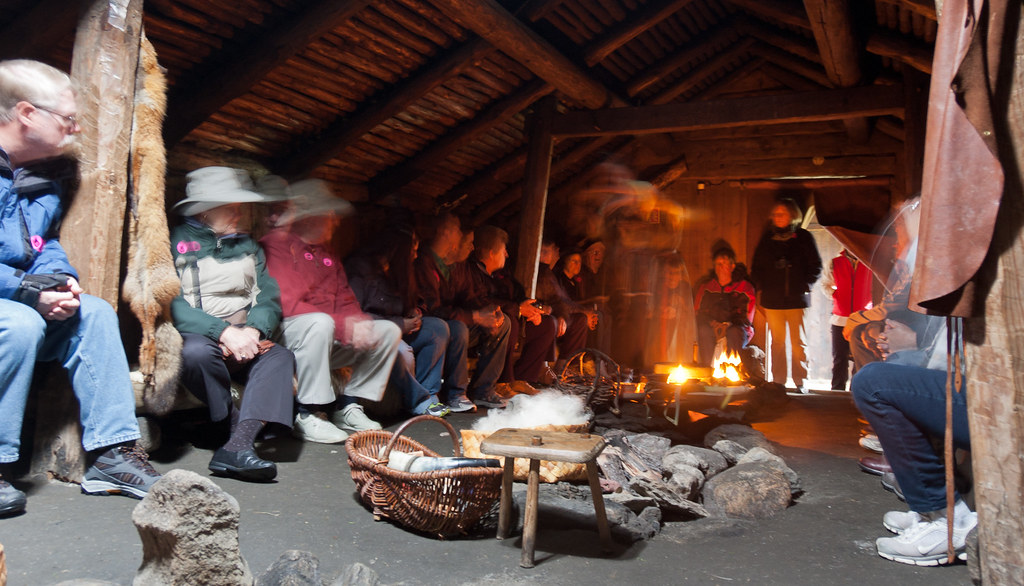
Above: The inside provided warmth and shelter on a cold day!
Afterwards, we visited the Archaeological Museum where we learnt about Viking tools, and had the myth about horned helmets dispelled (they never existed!). Our final stop was the Petroleum Museum which has many interactive exhibits, complete with demonstrations of how oil forms. There are exhibitions on land as well as simulated mini-platforms which were pretty cool!
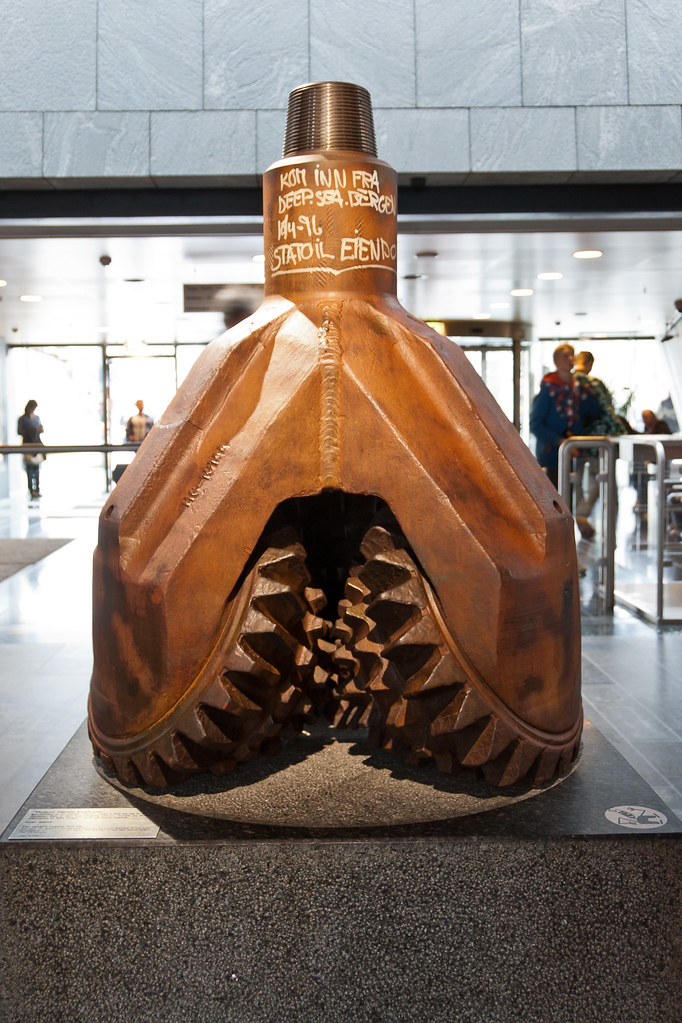
Above: The museum houses the largest drill bit in the world, which weights 1,700kg and measures 90cm in diameter.
On our sail away from Stavanger, we visited Lysefjord, which is the home of Pulpit Rock - one of Norway's most spectacular natural wonders, jutting more than 1,500 feet above the sea. You can read about my epic climb to Pulpit Rock in a future blog post.
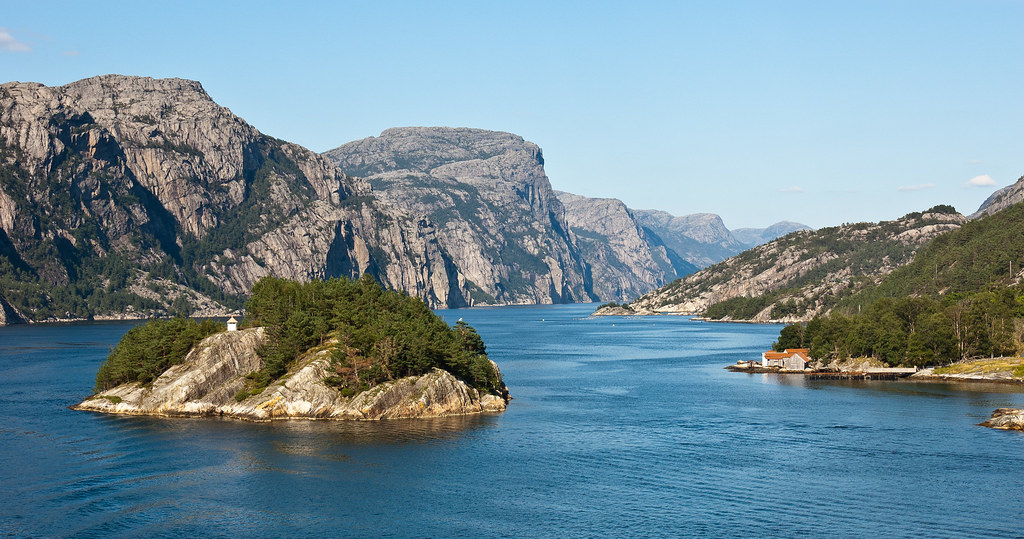
Above: Lysefjord - another beautiful Norwegian fjord.

No comments:
Post a Comment